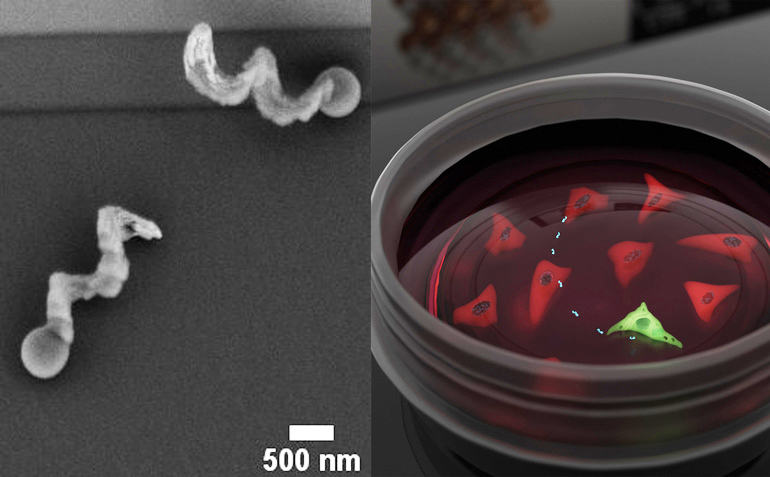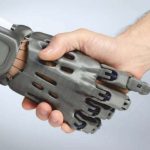Researchers at the Max Planck Institute for Intelligent Systems in Germany have developed powerful nanopropellers that can be steered into the interior of cells to deliver gene therapy. The magnets that these devices, each about the size of a bacteria, are made of were created for the first time for this very task.
Most powerful magnets are either not bio-compatible, lose their properties at small scales, or cannot be manufactured to have very fine details, so cannot be used to manipulate tiny objects from a distance and inside the body. To overcome this, the team created magnets using an iron platinum “L10” alloy that has magnetic properties that “outperform” the most powerful micromagnets known until now (neodymium), yet are non-toxic and can be easily manufactured into tiny devices such as propellers.
The team from the Max Planck Institute for Intelligent Systems partnered with scientists from the Francis Crick Institute and the Max Planck Institute for Medical Research to coat nanopropellers, made using the new magnets, with DNA that codes for the production of green fluorescent protein inside cells. The researchers then used a magnetic field to drive the propellers into lung carcinoma cells. After some time, the carcinoma cells began to glow green, demonstrating that the technique has great potential for highly accurate delivery of gene therapy and even drugs into specific parts of the body.
The researchers also believe that the new magnetic nanodevices can be used to deliver antibiotics at much lower doses, but more precisely where needed, thereby reducing the chances of antibiotic resistance.
Additionally, the team has tested the material for toxicity in living cells and believe that produces little or no cytotoxicity.














